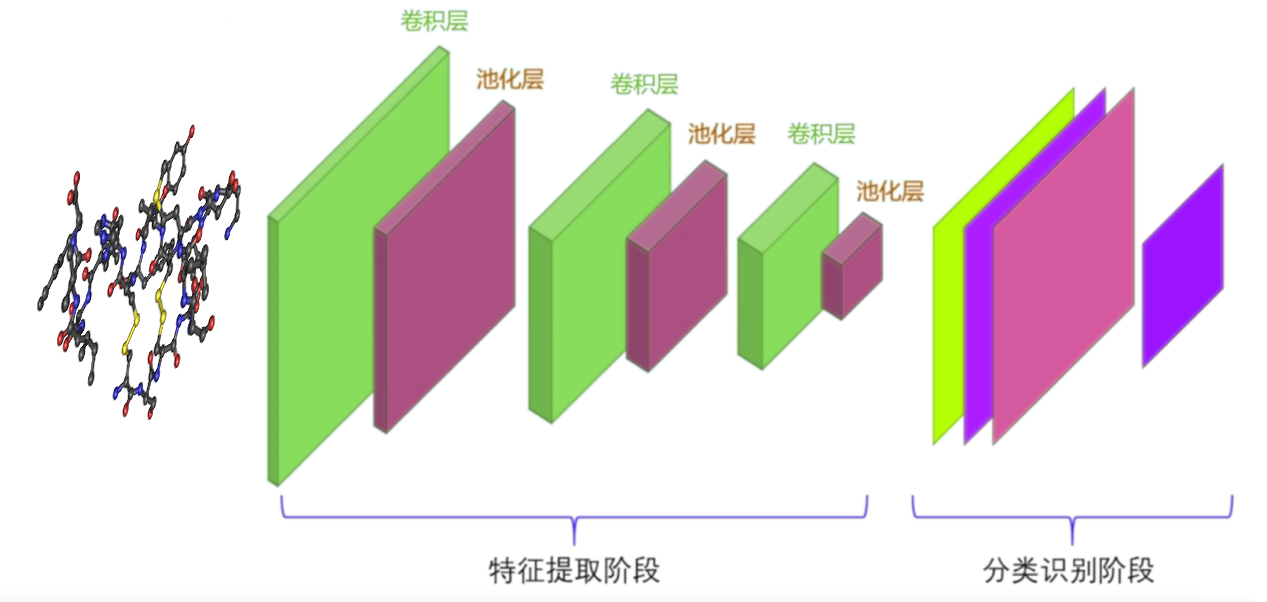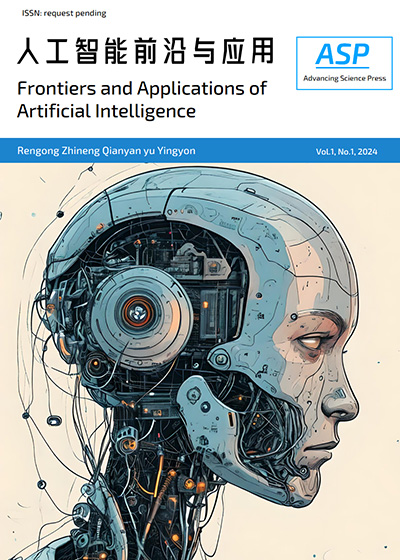基于机器学习和深度学习的抗菌肽预测研究进展
DOI:
https://doi.org/10.52810/FAAI.2024.005关键词:
人工智能, 深度学习, 机器学习, 抗菌肽, 预测摘要
随着抗生素耐药性问题的日益严峻,全球对新型药物的需求急剧增加。抗菌肽,作为一种具有广谱抗菌活性的天然肽类物质,展现出对抗耐药性细菌的潜力。然而,传统的抗菌肽发现方法耗时耗力且效率低下,难以满足迅速发展的医疗需求。近年来,机器学习和深度学习技术在生物信息学和序列分析中的应用为抗菌肽的高效预测和设计提供了新的解决方案。本文综述了机器学习和深度学习在抗菌肽预测中的应用,从抗生素耐药性问题引出抗菌肽的重要性,介绍了抗菌肽预测的挑战,以及基于机器学习和深度学习的预测模型和性能评估。尽管面临诸多挑战,二者在抗菌肽研究中的应用仍具有巨大潜力,有望为解决抗生素耐药性问题提供新的策略。参考文献
文细毛, 任南, 徐秀华, et al. 全国医院感染监控网医院感染病原菌分布及耐药性分析.中华医院感染学杂志, 2002, (04): 4-7.
胡燕, 白继庚, 胡先明, et al. 我国抗生素滥用现状、原因及对策探讨.中国社会医学杂志, 2013, 30(02): 128-30.
O'NEILL J. Antimicrobial resistance: tackling a crisis for the health and wealth of nations.Rev Antimicrob Resist, 2014.
STEINER H, HULTMARK D, ENGSTRöM Å, et al. Sequence and specificity of two antibacterial proteins involved in insect immunity.Nature, 1981, 292(5820): 246-8.
MATSUZAKI K. Control of cell selectivity of antimicrobial peptides . Biochimica et Biophysica Acta (BBA) - Biomembranes, 2009, 1788(8): 1687-92.
ANDERSSON D I, HUGHES D, KUBICEK-SUTHERLAND J Z. Mechanisms and consequences of bacterial resistance to antimicrobial peptides.Drug Resistance Updates, 2016, 26: 43-57.
HANEY E F, PETERSEN A P, LAU C K, et al. Mechanism of action of puroindoline derived tryptophan-rich antimicrobial peptides.Biochimica Et Biophysica Acta-Biomembranes, 2013, 1828(8): 1802-13.
李冠楠, 夏雪娟, 隆耀航, et al. 抗菌肽的研究进展及其应用.动物营养学报, 2014, 26(01): 17-25.
刘索奇. 基于深度学习的多标签抗菌肽预测研究, 2023.
LATA S, MISHRA N K, RAGHAVA G P S. AntiBP2: improved version of antibacterial peptide prediction.Bmc Bioinformatics, 2010, 11.
VELTRI D, KAMATH U, SHEHU A. Deep learning improves antimicrobial peptide recognition.Bioinformatics, 2018, 34(16): 2740-7.
XIAO X, WANG P, LIN W Z, et al. iAMP-2L: A two-level multi-label classifier for identifying antimicrobial peptides and their functional types.Analytical Biochemistry, 2013, 436(2): 168-77.
MEHER P K, SAHU T K, SAINI V, et al. Predicting antimicrobial peptides with improved accuracy by incorporating the compositional, physico-chemical and structural features into Chou's general PseAAC.Scientific Reports, 2017, 7.
PORTO W F, PIRES A S, FRANCO O L. CS-AMPPred: An Updated SVM Model for Antimicrobial Activity Prediction in Cysteine-Stabilized Peptides.Plos One, 2012, 7(12).
CHUNG C R, KUO T R, WU L C, et al. Characterization and identification of antimicrobial peptides with different functional activities.Briefings in Bioinformatics, 2020, 21(3): 1098-114.
THOMAS S, KARNIK S, BARAI R S, et al. CAMP: a useful resource for research on antimicrobial peptides.Nucleic Acids Research, 2010, 38: D774-D80.
BHADRA P, YAN J L, LI J Y, et al. AmPEP: Sequence-based prediction of antimicrobial peptides using distribution patterns of amino acid properties and random forest . Scientific Reports, 2018, 8.
孙志军, 薛磊, 许阳明, et al. 深度学习研究综述.计算机应用研究, 2012, 29(08): 2806-10.
周飞燕, 金林鹏, 董军. 卷积神经网络研究综述.计算机学报, 2017, 40(06): 1229-51.
YAN J L, BHADRA P, LI A, et al. Deep-AmPEP30: Improve Short Antimicrobial Peptides Prediction with Deep Learning.Molecular Therapy-Nucleic Acids, 2020, 20: 882-94.
XU J, LI F Y, LI C, et al. iAMPCN: a deep-learning approach for identifying antimicrobial peptides and their functional activities.Briefings in Bioinformatics, 2023, 24(4).
BILESCHI M L, BELANGER D, BRYANT D, et al. Using deep learning to annotate the protein universe.Nature Biotechnology, 2022, 40(6): 932-+.
任欢, 王旭光. 注意力机制综述.计算机应用, 2021, 41(S1): 1-6.
LEE H, LEE S, LEE I, et al. AMP-BERT: Prediction of antimicrobial peptide function based on a BERT model.Protein Science, 2023, 32(1).
CAO Q S, GE C, WANG X J, et al. Designing antimicrobial peptides using deep learning and molecular dynamic simulations.Briefings in Bioinformatics, 2023, 24(2).
XING W, ZHANG J, LI C, et al. iAMP-Attenpred: a novel antimicrobial peptide predictor based on BERT feature extraction method and CNN-BiLSTM-Attention combination model. Briefings in bioinformatics, 2023, 25(1).
XU X, YANG C, SHU K, et al. An antibacterial peptides recognition method based on BERT and Text-CNN.Sheng wu gong cheng xue bao = Chinese journal of biotechnology, 2023, 39(4): 1815-24.
ZHANG Y, LIN J Y, ZHAO L M, et al. A novel antibacterial peptide recognition algorithm based on BERT.Briefings in Bioinformatics, 2021, 22(6).
朱尤卓, 刘红玉, 游宇豪, et al. 深度学习在抗菌肽药物研究中的应用进展.中国抗生素杂志, 2023, 48(04): 374-80.
SALEM M, ARSHADI A K, YUAN J S. AMPDeep: hemolytic activity prediction of antimicrobial peptides using transfer learning.Bmc Bioinformatics, 2022, 23(1).
GERS F A, SCHRAUDOLPH N N, SCHMIDHUBER J. Learning precise timing with LSTM recurrent networks. Journal of Machine Learning Research, 2003, 3(1): 115-43.
HAMID M N, FRIEDBERG I. Identifying antimicrobial peptides using word embedding with deep recurrent neural networks.Bioinformatics, 2019, 35(12): 2009-16.
WANG Y D, WANG L Y, LI C Q, et al. AMP-EBiLSTM: employing novel deep learning strategies for the accurate prediction of antimicrobial peptides.Frontiers in Genetics, 2023, 14.
WANG C, GARLICK S, ZLOH M. Deep Learning for Novel Antimicrobial Peptide Design.Biomolecules, 2021, 11(3).
NAGARAJAN D, NAGARAJAN T, ROY N, et al. Computational antimicrobial peptide design and evaluation against multidrug-resistant clinical isolates of bacteria.Journal of Biological Chemistry, 2018, 293(10): 3492-509.
YOUMANS M, SPAINHOUR C, QIU P. Long Short-Term Memory Recurrent Neural Networks for Antibacterial Peptide Identification; proceedings of the Biological Ontologies and Knowledge Bases Workshop at IEEE International Conference on Bioinformatics and Biomedicine (IEEE BIBM), Kansas City, MI, F Nov 13-16, 2017 [C]. 2017.
LI C K, SUTHERLAND D, HAMMOND S A, et al. AMPlify: attentive deep learning model for discovery of novel antimicrobial peptides effective against WHO priority pathogens.Bmc Genomics, 2022, 23(1).
LIN J Y, ZENG X X, ZUO Y, et al. A Deep Neural Network for Antimicrobial Peptide Recognition; proceedings of the IEEE International Conference on Bioinformatics and Biomedicine (BIBM), San Diego, CA, F Nov 18-21, 2019 [C]. 2019.
MAO J S, GUAN S H, CHEN Y Q, et al. Application of a deep generative model produces novel and diverse functional peptides against microbial resistance.Computational and Structural Biotechnology Journal, 2023, 21: 463-71.
LI C J, ZOU Q, JIA C Z, et al. AMPpred-MFA: An Interpretable Antimicrobial Peptide Predictor with a Stacking Architecture, Multiple Features, and Multihead Attention.Journal of Chemical Information and Modeling, 2023.
余凯, 贾磊, 陈雨强, et al. 深度学习的昨天、今天和明天.计算机研究与发展, 2013, 50(09): 1799-804.
architectures: A case study on improving antimicrobial peptide recognition; proceedings of the Proceedings of the 12th international conference, F, 2020 [C].
葛尧, 陈松灿. 面向推荐系统的图卷积网络.软件学报, 2020, 31(04): 1101-12.
SUN T J, BU H L, YAN X, et al. LABAMPsGCN: A framework for identifying lactic acid bacteria antimicrobial peptides based on graph convolutional neural network.Frontiers in Genetics, 2022, 13.
XIAO X, SHAO Y T, CHENG X, et al. iAMP-CA2L: a new CNN-BiLSTM-SVM classifier based on cellular automata image for identifying antimicrobial peptides and their functional types. Briefings in Bioinformatics, 2021, 22(6).
SHARMA R, SHRIVASTAVA S, SINGH S K, et al. AniAMPpred: artificial intelligence guided discovery of novel antimicrobial peptides in animal kingdom.Briefings in Bioinformatics, 2021, 22(6).
Fang, F. A. N. G., Tan, W., & Liu, J. Z. (2005). Tuning of coordinated controllers for boiler-turbine units. Acta Automatica Sinica, 31(2), 291-296.
Wang, W., Liu, J., Zeng, D., Fang, F., & Niu, Y. (2020). Modeling and flexible load control of combined heat and power units. Applied Thermal Engineering, 166, 114624.
Liu, J., Song, D., Li, Q., Yang, J., Hu, Y., Fang, F., & Joo, Y. H. (2023). Life cycle cost modelling and economic analysis of wind power: A state of art review. Energy Conversion and Management, 277, 116628.
Fang, F., Zhu, Z., Jin, S., & Hu, S. (2020). Two-layer game theoretic microgrid capacity optimization considering uncertainty of renewable energy. IEEE Systems Journal, 15(3), 4260-4271.
Liu, J., Zeng, D., Tian, L., Gao, M., Wang, W., Niu, Y., & Fang, F. (2015). Control strategy for operating flexibility of coal-fired power plants in alternate electrical power systems. Proceedings of the CSEE, 35(21), 5385-5394.
Fang, F., & Xiong, Y. (2014). Event-driven-based water level control for nuclear steam generators. IEEE Transactions on Industrial electronics, 61(10), 5480-5489.
Wang, N., Fang, F., & Feng, M. (2014, May). Multi-objective optimal analysis of comfort and energy management for intelligent buildings. In The 26th Chinese control and decision conference (2014 CCDC) (pp. 2783-2788). IEEE.
Lv, Y., Lv, X., Fang, F., Yang, T., & Romero, C. E. (2020). Adaptive selective catalytic reduction model development using typical operating data in coal-fired power plants. Energy, 192, 116589.
Fang, F., & Wu, X. (2020). A win–win mode: The complementary and coexistence of 5G networks and edge computing. IEEE Internet of Things Journal, 8(6), 3983-4003.
Lv, Y., Fang, F. A. N. G., Yang, T., & Romero, C. E. (2020). An early fault detection method for induced draft fans based on MSET with informative memory matrix selection. ISA transactions, 102, 325-334.
Fang, F., Jizhen, L., & Wen, T. (2004). Nonlinear internal model control for the boiler-turbine coordinate systems of power unit. PROCEEDINGS-CHINESE SOCIETY OF ELECTRICAL ENGINEERING, 24(4), 195-199.
Han, Y., Wang, Y., Li, H., & Li, X. (2014, November). Data-aware DRAM refresh to squeeze the margin of retention time in hybrid memory cube. In 2014 IEEE/ACM International Conference on Computer-Aided Design (ICCAD) (pp. 295-300). IEEE.
Wu, B., Wang, C., Wang, Z., Wang, Y., Zhang, D., Liu, D., ... & Hu, X. S. (2020). Field-free 3T2SOT MRAM for non-volatile cache memories. IEEE Transactions on Circuits and Systems I: Regular Papers, 67(12), 4660-4669.
Ma, X., Wang, Y., Wang, Y., Cai, X., & Han, Y. (2022). Survey on chiplets: interface, interconnect and integration methodology. CCF Transactions on High Performance Computing, 4(1), 43-52.
Hamdioui, S., Pouyan, P., Li, H., Wang, Y., Raychowdhur, A., & Yoon, I. (2017, November). Test and reliability of emerging non-volatile memories. In 2017 IEEE 26th Asian Test Symposium (ATS) (pp. 175-183). IEEE.
Li, W., Wang, Y., Li, H., & Li, X. (2019, January). P3M: a PIM-based neural network model protection scheme for deep learning accelerator. In Proceedings of the 24th Asia and South Pacific Design Automation Conference (pp. 633-638).
Wang, Y., Deng, J., Fang, Y., Li, H., & Li, X. (2017). Resilience-aware frequency tuning for neural-network-based approximate computing chips. IEEE Transactions on Very Large Scale Integration (VLSI) Systems, 25(10), 2736-2748.
Qu, S., Li, B., Wang, Y., Xu, D., Zhao, X., & Zhang, L. (2020, July). RaQu: An automatic high-utilization CNN quantization and mapping framework for general-purpose RRAM accelerator. In 2020 57th ACM/IEEE Design Automation Conference (DAC) (pp. 1-6). IEEE.
Li, C., Wang, Y., Liu, C., Liang, S., Li, H., & Li, X. (2021). {GLIST}: Towards {in-storage} graph learning. In 2021 USENIX Annual Technical Conference (USENIX ATC 21) (pp. 225-238).
Zhao, X., Wang, Y., Liu, C., Shi, C., Tu, K., & Zhang, L. (2020, July). BitPruner: Network pruning for bit-serial accelerators. In 2020 57th ACM/IEEE Design Automation Conference (DAC) (pp. 1-6). IEEE.
Liu, B., Chen, X., Wang, Y., Han, Y., Li, J., Xu, H., & Li, X. (2019, January). Addressing the issue of processing element under-utilization in general-purpose systolic deep learning accelerators. In Proceedings of the 24th Asia and South Pacific Design Automation Conference (pp. 733-738).
Wang, C., Wang, Y., Han, Y., Song, L., Quan, Z., Li, J., & Li, X. (2017, January). CNN-based object detection solutions for embedded heterogeneous multicore SoCs. In 2017 22nd Asia and South Pacific design automation conference (ASP-DAC) (pp. 105-110). IEEE.
Xu, D., Chu, C., Wang, Q., Liu, C., Wang, Y., Zhang, L., ... & Cheng, K. T. (2020, October). A hybrid computing architecture for fault-tolerant deep learning accelerators. In 2020 IEEE 38th International Conference on Computer Design (ICCD) (pp. 478-485). IEEE.
Liu, C., Chu, C., Xu, D., Wang, Y., Wang, Q., Li, H., ... & Cheng, K. T. (2021). HyCA: A hybrid computing architecture for fault-tolerant deep learning. IEEE Transactions on Computer-Aided Design of Integrated Circuits and Systems, 41(10), 3400-3413.
Chen, W., Wang, Y., Yang, S., Liu, C., & Zhang, L. (2020, March). You only search once: A fast automation framework for single-stage dnn/accelerator co-design. In 2020 Design, Automation & Test in Europe Conference & Exhibition (DATE) (pp. 1283-1286). IEEE.
Wang, Y., Li, H., & Li, X. (2017). A case of on-chip memory subsystem design for low-power CNN accelerators. IEEE Transactions on Computer-Aided Design of Integrated Circuits and Systems, 37(10), 1971-1984.







